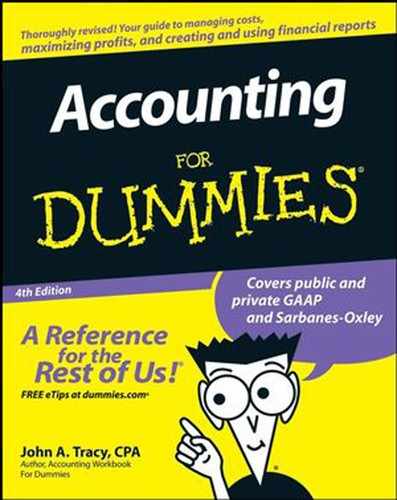12.7. Dealing with Information Overload
As a general rule, the larger a business, the longer its annual financial report. I've seen annual financial reports of small, privately owned businesses that you could read in 30 minutes to an hour. In contrast, the annual reports of large, publicly owned business corporations are typically 30, 40, or 50 pages (or more). You would need two hours to do a quick read of the entire annual financial report, without trying to digest its details.
|
12.7.1. Browsing based on your interests
How do investors in a business deal with the information overload of annual financial reports? Very, very few persons take the time to plow through every sentence, every word, every detail, and every number on every page — except for those professional accountants, lawyers, and auditors directly involved in the preparation and review of the financial report. It's hard to say how most managers, investors, creditors, and others interested in annual financial reports go about dealing with the massive amount of information — very little research has been done on this subject. But I have some observations to share with you.
|
Annual financial reports are designed for archival purposes, not for a quick read. Instead of addressing the needs of investors and others who want to know about the profit performance and financial condition of the business — but have only a very limited amount of time available — accountants produce an annual financial report that is a voluminous financial history of the business. Accountants leave it to the users of annual reports to extract the main points. So financial statement readers use relatively few ratios and other tests to get a feel for the financial performance and position of the business. (Chapters 13 and 17 explain how readers of financial reports get a fix on the financial performance and position of a business.)
12.7.2. Recognizing condensed versions
Typically, these summaries — called condensed financial statements — do not provide footnotes or the other disclosures that are included in the complete and comprehensive annual financial reports. If you really want to see the official financial report of the organization, you can ask its headquarters to send you a copy (or, for public corporations, you can go to the EDGAR database of the SEC — see the sidebar "Financial reporting on the Internet").
12.7.3. Using other sources of business information
Keep in mind that annual financial reports are only one of several sources of information to owners, creditors, and others who have a financial interest in the business. Annual financial reports, of course, come out only once a year — usually two months or so after the end of the company's fiscal (accounting) year. You have to keep abreast of developments during the year by reading financial newspapers or through other means. Also, annual financial reports present the sanitized version of events; they don't divulge scandals or other negative news about the business.
NOTE
Not everything you may like to know as an investor is included in the annual financial report. For example, information about salaries and incentive compensation arrangements with the top-level managers of the business are disclosed in the proxy statement, not in the annual financial report. A proxy statement is the means by which the corporation solicits the vote of stockholders on issues that require stockholder approval — one of which is compensation packages of top-level managers. Proxy statements are filed with the SEC and are available on its EDGAR database.

